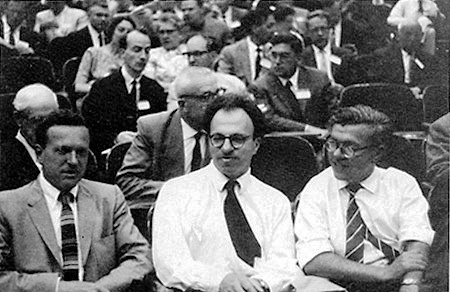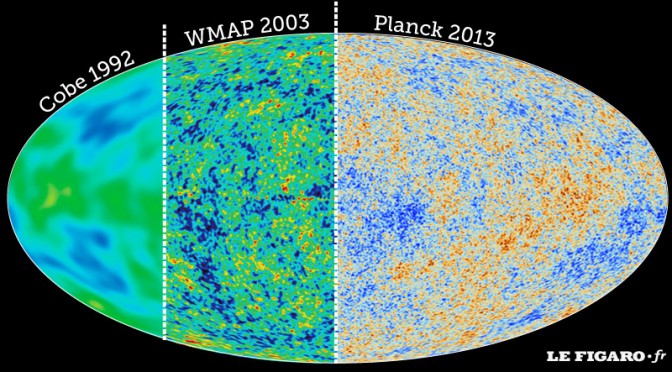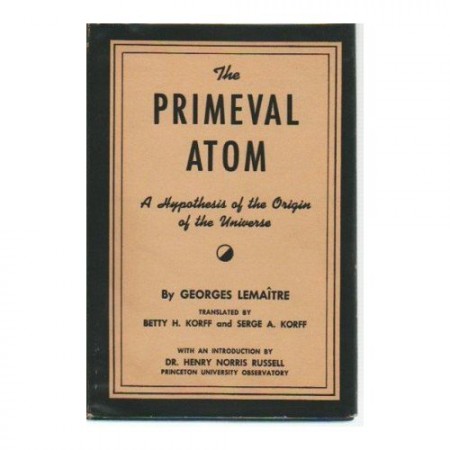Sequel of previous post : Lemaître
In this series of posts about the history of relativistic cosmology, I provide an epistemological analysis of the developments of the field from 1917 to 2006, based on the seminal articles by Einstein, de Sitter, Friedmann, Lemaître, Hubble, Gamow and other main historical figures of the field. It appears that most of the ingredients of the present-day standard cosmological model, including the accelation of the expansion due to a repulsive dark energy, the interpretation of the cosmological constant as vacuum energy or the possible non-trivial topology of space, had been anticipated by Lemaître, although his papers remain mostly unquoted.
The hot big bang model
By 1950, when Lemaître published a summary, in English, of his theory, entitled The Primeval Atom: An Essay on Cosmogony, it was thoroughly unfashionable. Two years previously the rival theory of a « steady state » universe, supported principally by Thomas Gold in America and by Hermann Bondi and Fred Hoyle in Britain, had met with widespread acclaim. Their argument was that the universe had always been and would always be as it is now, that is was eternal and unchanging. In order to obtain what they wanted, they assumed an infinite Euclidean space, filled with a matter density constant in space and time, and a new « creation field » with negative energy, allowing for particles to appear spontaneously from the void in order to compensate the dilution due to expansion ! Seldom charitable towards his scientific adversaries, Fred Hoyle made fun of Lemaître by calling him « the big bang man ». In fact he used for the first time the expression « big bang » in 1948, during a radio interview.

The term, isolated from its pejorative context, became part of scientific parlance thanks to a Russian-born American physicist George Gamow, a former student of Alexander Friedmann. Hoyle therefore unwittingly played a major part in popularising a theory he did not believe in; he even brought grist to the mill of big bang theory by helping to resolve the question why the universe contained so many chemical elements. Claiming that all the chemical elements were formed in stellar furnaces, he was contradicted by Gamow and his collaborators Ralph Alpher and Robert Hermann. The latter took advantage of the fact that the early universe should have been very hot. Assuming a primitive mixture of nuclear particles called Ylem, a Hebrew term referring to a primitive substance from which the elements are supposed to have been formed, they were able to explain the genesis of the lightest nuclei (deuterium, helium, and lithium) during the first three minutes of the Universe, at an epoch when the cosmic temperature reached 10 billion degrees. Next they predicted that, at a later epoch, when the Universe had cooled to a few thousand degrees, it suddenly became transparent and allowed light to escape for the first time. Alpher and Hermann calculated that one should today receive an echo of the big bang in the form of « blackbody » radiation at a fossil temperature of about 5 K. Their prediction did not cause any excitement. They refined their calculations several times until 1956, without causing any more interest; no specific attempt at detection was undertaken. Continue reading The Rise of Big Bang Models (5) : from Gamow to Today


